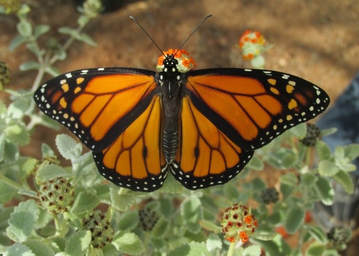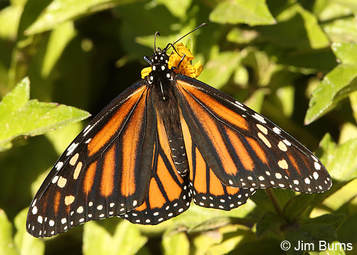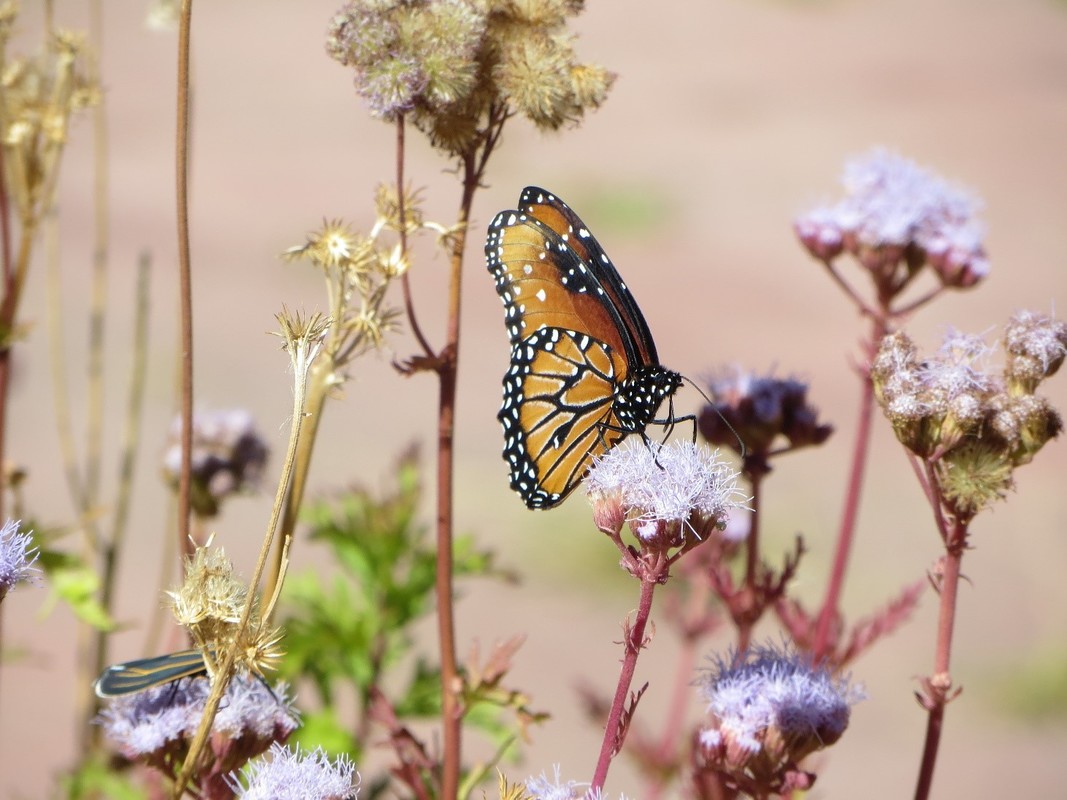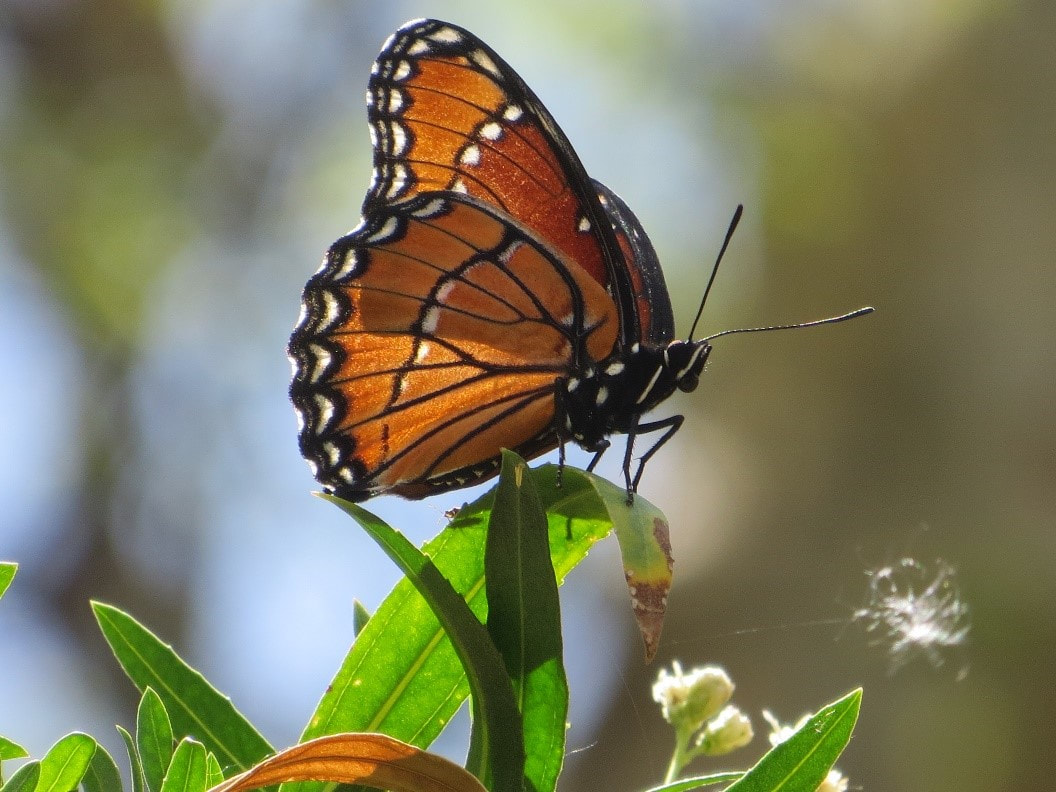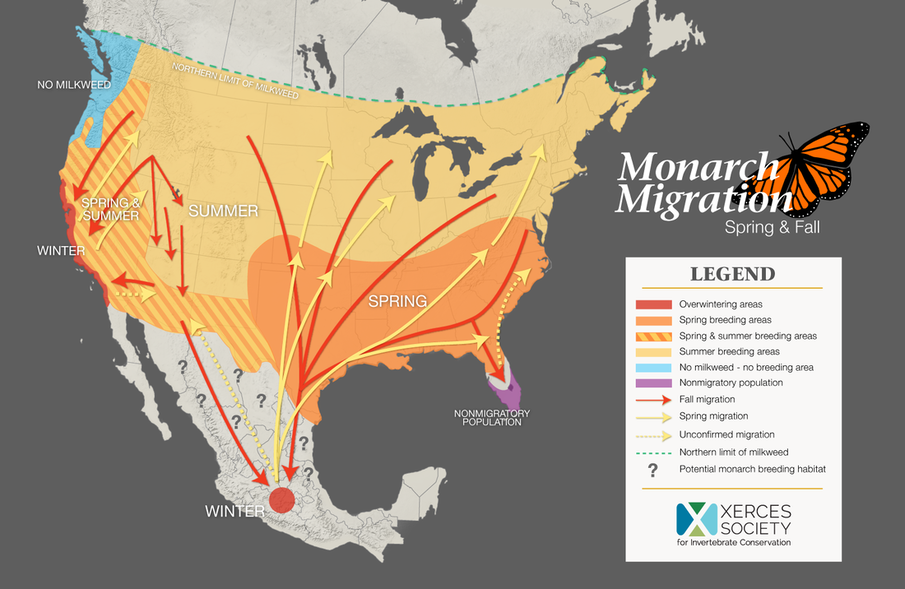monarch: Did you know?
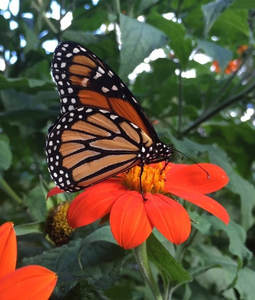 Photo by Steve Plath Photo by Steve Plath
The monarch butterfly (Danaus plexippus) is a milkweed butterfly in the family Nymphalidiae. They are easy to recognize by their orange, black, and white markings. They are found throughout the United States, as well as Mexico and Canada. During the fall months, monarchs make the 3000 mile journey to their wintering grounds in Mexico or southern California. Monarch caterpillars feed exclusively on milkweeds (Asclepias sp.). These milkweeds have a toxin that monarch caterpillars ingest and store in their bodies. The monarch’s bright colors tells predators: “Don’t eat me. I am poisonous!” In the last 20 years the population of monarch butterflies has declined by 90%. Click HERE to learn about what plants attract monarch butterflies. |
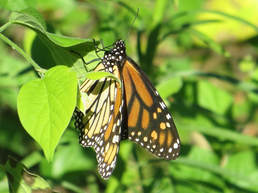 Photo by Clara Gauna
Photo by Clara Gauna
Female monarchs deposit eggs on milkweed plants. These tiny, round eggs hatch into small green and white striped caterpillars. The caterpillars will feed on the milkweed for about two weeks and shed their skin several times to help them grow. Once they are large enough they are ready to transform into pupae (chrysalis). The caterpillar attaches itself to a leaf or branch with silk, then sheds its skin to form a hard shell. The chrysalis starts out green with golden dots. Then slowly it turns white, then see-through. After about 10-15 days, a butterfly emerges from the chrysalis.
Female monarchs deposit eggs on milkweed plants. These tiny, round eggs hatch into small green and white striped caterpillars. The caterpillars will feed on the milkweed for about two weeks and shed their skin several times to help them grow. Once they are large enough they are ready to transform into pupae (chrysalis). The caterpillar attaches itself to a leaf or branch with silk, then sheds its skin to form a hard shell. The chrysalis starts out green with golden dots. Then slowly it turns white, then see-through. After about 10-15 days, a butterfly emerges from the chrysalis.
Male Monarch Female Monarch
Similar Butterflies
Queen (Danaus gilippus) Vicerory (Limenitis archippus)

